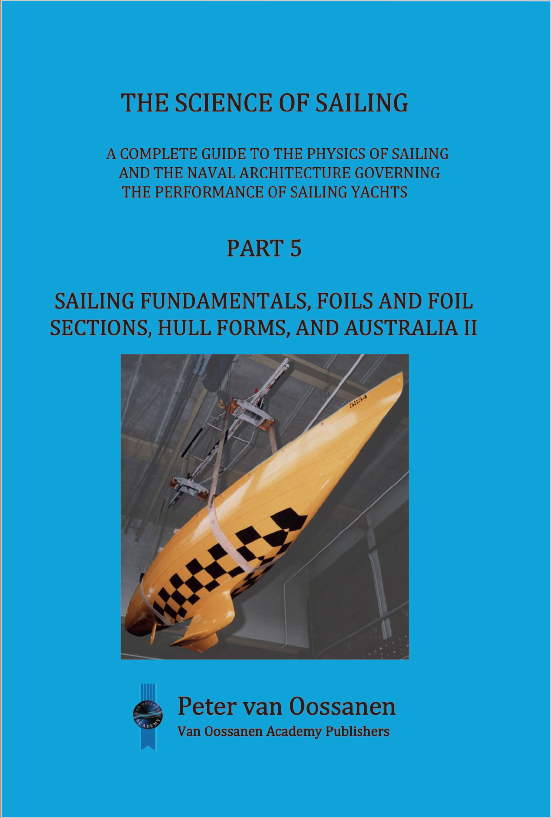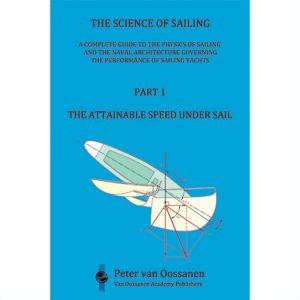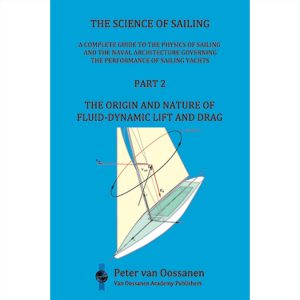Description
The Science of Sailing Part 5
Part 5 commences with Chapter 10, devoted to coordinate systems, axis rotations, and the determination of the attitude of a sailing vessel at some angle of heel, running trim, and leeway to wind and water vectors. Chapter 11 covers force and moment equilibrium—specifically, the forces and moments involved and their location, magnitude, and direction. Free moments originate from force-couples. They play a major role in determining the location of the resultant force, particularly when the flow exhibits boundary layer separation. The treatment of free moments is found in Chapter 12.
The lift and drag of foil sections are covered in Chapter 13. Particular attention is given to the relation between foil section geometry and the lift and drag forces exerted by the flow over a range of angles of attack. Foil sections are assumed to possess an infinite span. The span of foils such as keels and rudders is finite, however, and the flow around the tips of wings and foils affects lift and drag significantly—increasingly as the span, in relation to the length of the chord, decreases. Chapter 14 addresses this effect of finite span.
The developing hull form for what I have termed the “intermediate-Froude range of speeds” is described in Chapter 15. Besides a historical account of how the best hull forms came to be developed, this chapter provides an overview of the relative performance in terms of drag of the various hull forms considered. Hull forms for speeds associated with Froude numbers (based on waterline length) exceeding 1.0 are not considered, as this is the regime of hard-chine planing hulls, not adopted for sailing craft. The material on hard-chine hulls included in this chapter is for defining the difference in drag in this Froude number range with round-bilge hulls. Such hulls, irrespective of whether they are round bilge or hard chine, are often incorrectly referred to as “semi-displacement” or “semi-planing hulls”.
Finally, in Chapter 16, I have, for the first time in 40 years, described in detail how the America’s Cup was won and my role therein in 1983. This chapter differs from previous chapters because of wanting to include descriptions of the shenanigans between the New York Yacht Club and the Australia II team. Many books and articles have been written about the non-sailing aspects of that event, but none have covered it completely, and some have been misled about what actually happened.
4 of the series “The Science of Sailing” covers the phenomena and drag that arise from the fluidity of the water surface. Topics that are dealt with are wave causation, the wave pattern generated by the hull, wave drag, running trim and sinkage/rise, breaking waves, spray, wind-generated waves and spectra, motions of sailing yachts, wave-added drag, surfing behaviour, cavitation, ventilation, and the effects of limited water depth.
Attention! If you wish to order from outside the Netherlands OR more than one book please use this form.



